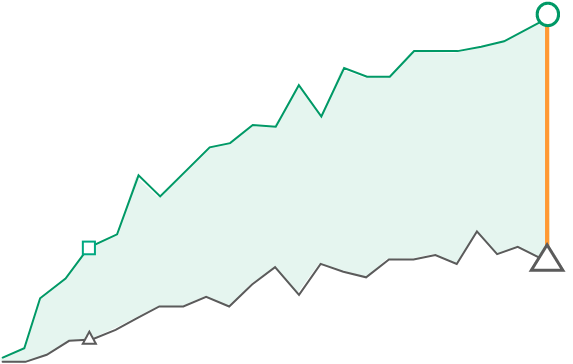Proportion of patients with ≥4-point
improvement in WI-NRS AT WEEK 24
(primary endpoint)1-3,a
- A nominal difference was observed at Week 4 (19% with DUPIXENT vs 4% with placebo)3
Definitive conclusions cannot be made for results earlier than 24 weeks in PRIME. Data were not multiplicity controlled.
PRIME2 18+ YEARS
- A nominal difference was observed at Week 11 (33% with DUPIXENT vs 17% with placebo), with a significantly greater proportion of DUPIXENT patients achieving a meaningful response at Week 12 (37% with DUPIXENT vs 22% with placebo; P=0.022, primary endpoint). At Week 24, 58% of DUPIXENT patients achieved significant itch relief vs 20% with placebo (P <0.001, secondary endpoint)1-3
Definitive conclusions cannot be made for results at timepoints other than Week 12 and 24 in PRIME2. Data were not multiplicity controlled.
Pooled analysis
- 7.8% of DUPIXENT patients had ≥4-point improvement in WI-NRS at Week 2 vs 1.9% with placebo3,4
- 59% of DUPIXENT patients had ≥4-point improvement in WI-NRS at Week 24 vs 19% with placebo3,4
Definitive conclusions cannot be made for these results as the data were not multiplicity controlled and P values were nominal.
DUPIXENT showed consistent efficacy regardless of patients’ atopic background1,5
Pooled analysis
Itch improvement regardless of patients’ history of atopy
Proportion of patients with ≥4-point improvement in WI-NRS at Week 241,5
Definitive conclusions cannot be made for these results as the data were not
multiplicity controlled and P values were nominal.
In the PRIME trials, patients were stratified by their history of atopy.
IGA PN-S, Investigator’s Global Assessment PN-Stage; PN, prurigo nodularis; Q2W, once every 2 weeks; SD, standard deviation; WI-NRS, Worst Itch numerical rating scale.
EXPLORE NODULE
CLEARANCE
